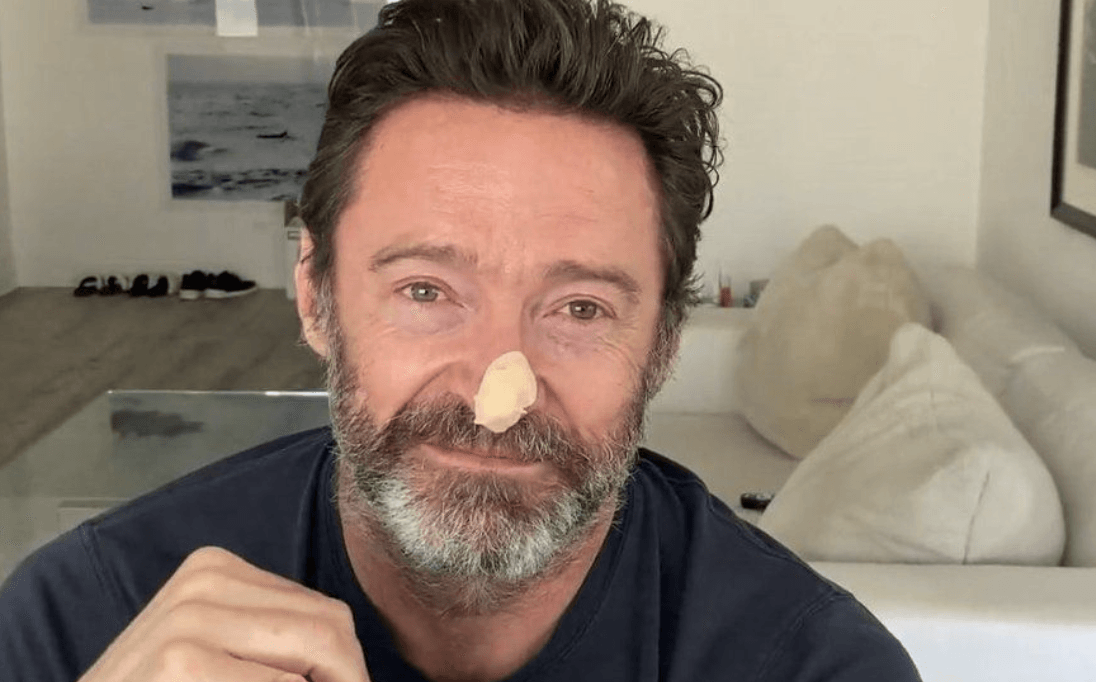
What Hugh Jackman Wants You to Know About Skin Cancer
Appearing with a bandaged nose last month in an Instagram Story, actor Hugh Jackman told fans that he had had two biopsies for spots that his doctor thought could be basal cell carcinoma (BCC), a common form of skin cancer.
“I just went to my doctor…and she just saw little things—could be or could not be basal cell, in her opinion,” he said.
In a later Stories update, he announced that his biopsies had come back negative.
Our dermatologists in Jupiter were delighted that such a high-profile star chose to get out the message about skin cancer. We think that sometimes when doctors like us talk about it, people tend to tune us out. But when someone like Jackman spreads the word, more people might pay attention.
Because May is Skin Cancer Awareness Month, we wanted to take advantage of Jackman’s announcement to remind you of the dangers of this very preventable disease.
Skin Cancer Facts
BCC is the most common form of skin cancer, and also one of the most treatable if caught in its early stages. The next most common form is a squamous cell, followed by malignant melanoma, the most deadly type.
- Cancer of the skin is the most common form of cancer in the United States.
- Nearly five million people are treated for skin cancer every year in the United States.
- It is estimated that 40 to 50 percent of fair-skinned people who reach age 65 will develop at least one skin cancer, but those with darker skin are also susceptible.
- The most preventable cause of skin cancer is exposure to ultraviolet (UV) light, either from the sun or from artificial sources like tanning beds.
- Skin cancer is triggered by UV light’s damage to the skin’s DNA. This causes the cells to create mutations or “errors” during replication, which causes the cells to grow out of control, resulting in cancer.
Early Exposure Adds Up
This most recent episode was not Jackman’s first encounter with BCC. He’s been treated for it several times before: in 2013, 2014, 2017, and 2021, so he’s become something of a lay expert on the subject.
He said in his post that, while BCC is “the least dangerous of them all,” people should still wear sunscreen to avoid getting it, or any skin cancer.
“If I can just take this opportunity to remind you summer is coming, for those of us in the Northern Hemisphere, please wear sunscreen,” he said.
Research has shown that even a single bad sunburn as far back as childhood can result in skin cancer later in life, because of the lasting DNA damage. The same damage can result from less intense but cumulative exposure over a period of years.
“[Though] it is well known that bad sunburns can increase your risk of skin cancer, what you may not realize is [that] even low-grade incidental UV light exposure can increase your risk over a lifetime,” Joshua Zeichner, MD, an associate professor of dermatology at Mount Sinai Hospital in New York City, told Self magazine.
“No matter how much you want a tan, trust me, trust me, trust me. This is all stuff that happened [to his skin] 25 years ago, and it’s coming out now,” Jackman said.
“Put some sunscreen on,” he advised. “You’ll still have an incredible time out there. Please be safe.”
What to Look for
Like Jackman’s, 95 percent of all skin cancer can be cured if caught early, so it’s important to know what signs to look for.
When checking for possible skin cancers, any new growth on the skin should be investigated. So should a sore that doesn’t heal or a smooth, shiny, or pearly-looking bump.
In addition, an easy way to remember what other characteristics to look for is the alphabet guide provided by the Centers for Disease Control and Prevention (CDC).
A = “asymmetrical.” Does the mole or spot have an irregular shape with two parts that look very different from each other?
B = “border.” Is the border of the mole or spot irregular or jagged?
C = “color.” Is the color uneven?
D = “diameter.” Is the mole or spot larger than the size of a pea?
E = “evolving.” Has the mole or spot changed during the past few weeks or months?
How to Protect Yourself
The best way to dodge skin cancer is to avoid UV light, whether from the sun or from tanning beds, which are every bit as dangerous as sunlight.
- Avoid the sun during peak-burn hours of 10 a.m. to 4 p.m.
- Always use sunscreen with a Sun Protection Factor (SPF) of 30 or higher, even if you’re indoors and sitting near windows. Recent studies show that UV light penetrates glass far more than previously thought.
- When outdoors, always wear a hat with a wide brim of at least four inches, as well as clothing made of sun-protective fabric (UV rays can penetrate ordinary thin cloth, the gauzy type we tend to wear in summer months).
- Be careful of reflected light, which can even “bounce” beneath a sun umbrella. Anything white, including sand and concrete, will magnify the UV rays, and light reflecting off the water is notorious for causing unanticipated sunburns.

